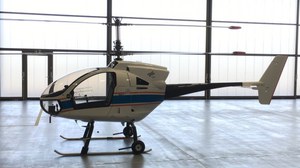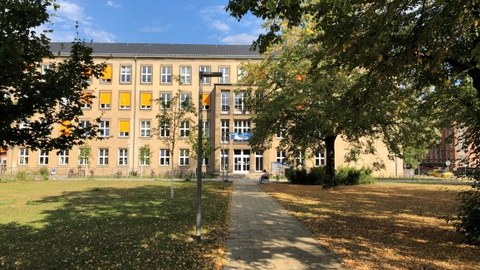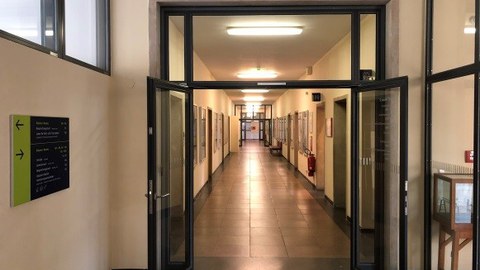Studying at the Chair of Helicopter Technology
The module "Helicopter Technology" is offered as a course in this subject area. It consists of two lectures: Part 1 "Fundamentals", in the summer semester, and Part 2 "Dynamics and Flight Mechanics", in the winter semester. The module is aimed at students of the diploma degree program Transport Engineering in the course of study Transport Systems Engineering and Logistics as well as the Master degree program Air Transport and Logistics. The module is part of the catalogue of compulsory elective modules. In addition, students of Mechanical Engineering (e.g. course of study Aerospace Engineering or Simulation Methods of Mechanical Engineering) and Mechatronics are also addressees of the module.
There are also opportunities for internships, Bachelor's, Master's/Diploma theses, etc., which are required as part of the various degree programs, and also for work as research assistant alongside the course of studies.
 © DLR
© DLR
Studying at the Chair of Helicopter Technology
Rotorcraft are complex aircraft that have captured a solid share of the aviation market. Although they represent a smaller market segment compared to fixed-wing aircraft, they perform tasks that cannot be done with other aircraft. These include, above all, air rescue services. Germany has built up one of the oldest and best-developed air rescue systems with helicopters in the world. This is called "Helicopter Emergency Medical Service" (HEMS for short). Of course, this also includes sovereign tasks such as police services. But the expansion and operation of wind farms off the coasts would also be less efficient without helicopters, because here as well helicopters take on tasks such as transporting maintenance personnel to wind turbines. These tasks are made possible because helicopters can hover and fly slowly in all spatial directions and have good control characteristics. Therefore, they can also land on unprepared landing areas, which are often even framed by obstacles. This ability is made possible by the rotor, which on the other hand is also the cause of many problems.
In addition to the classic helicopters with one or more main rotors there are increasingly further variants of rotorcraft, such as gyroplanes, helicopters with wings and/or separate thrust organ, tilt-rotor aircraft, tilt-wing aircraft etc. The last three variants aim in particular to achieve higher speed of flight and range compared to classic helicopters. Particularly, the "Future Vertical Lift Program" in the US or European "Clean Sky" activities are proclaiming such aircraft. In addition, current developments in the context of "Urban Air Mobility" are opening up completely new possibilities for designing rotorcraft with distributed, electric drives (eVTOL), Some of the eVTOL variants can be traced back to the variants mentioned above. Therefore, it makes sense to expand the classical canon of lectures at the TU Dresden by the module “Helicopter Technology”. The module addresses students of the diploma program Transport Engineering in the course of study Transport Systems Engineering and Logistics as well as of the Master program Air Transport and Logistics. It further is aiming at students of Mechanical Engineering (e.g. course of study Aerospace Engineering or Simulation Methods of Mechanical Engineering) and Mechatronics. The module "Helicopter Technology" consists of two lectures: Part 1 "Fundamentals" in the summer semester and Part 2 "Dynamics and Flight Mechanics" in the winter semester.
There are also opportunities for internships, Bachelor, Master/Diploma theses etc., which are required as part of the degree program, but also as research assistant alongside the courses.



